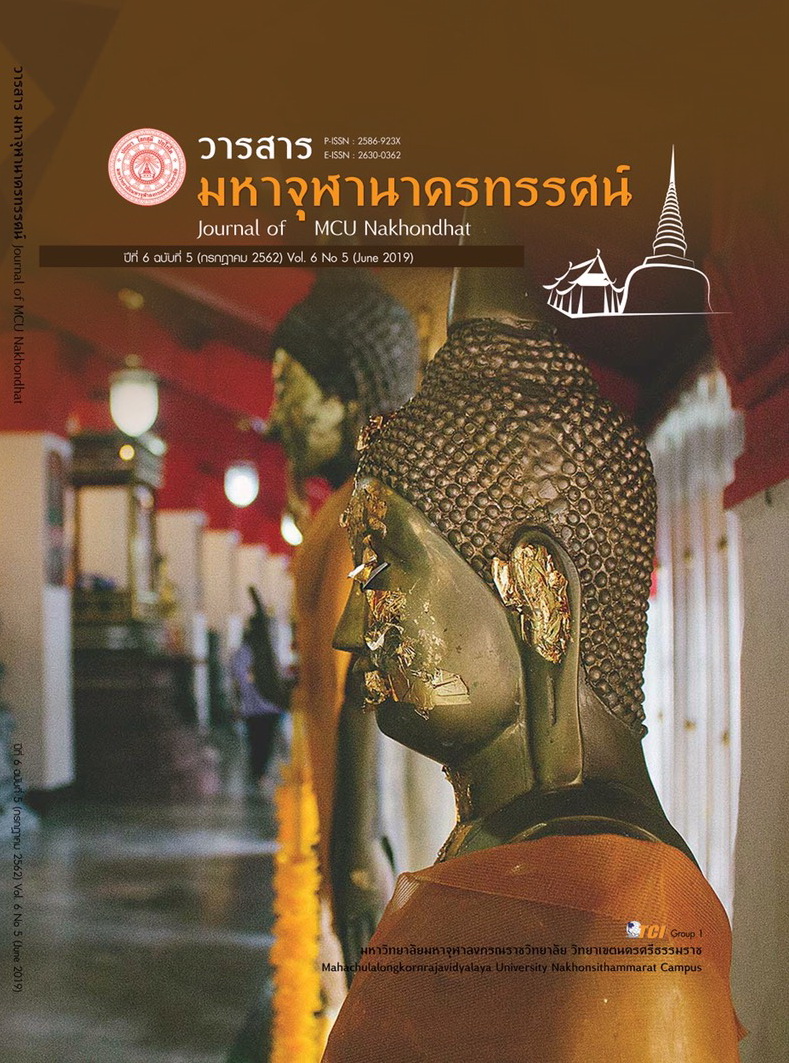THE ANALYTICAL STUDY OF THE BUDDHIST CO¬NCEPT APPEARED IN THE PAGODAS IN CHIANG SEAN CITY
Main Article Content
Abstract
This research has 3 objectives which are; (1) to study the idea of Buddhist arts in Chiang Sean period, (2) to study the history of Chedi (stupa) in Chiang Sean period, and (3) to analyze the from Buddha Dhamma as shown in Chedi of Chiang Sean period. This research is a qualitative research including a documentary research and an In-depth interview.
The research shows that
The idea of Buddhist arts in Chiang Sean period originates from the city named Chiang Sean the center of arts and culture in ancient northern Thailand. Regarding the architecture, there are 2 types of Chedi; 1) The Prasart shape and 2) the Lanna-styled Bell shape. The aims of creating Chedi are to create a sacred area, to enshrine Buddha’s relics, to bring all goodness to lives. Chedi is signified to the Buddha himself, is the center of the universe, higher than gods of other believes, so it is the most importance in temple plan. So, to create a city must have a temple in the center. Chedi is surrounded by smaller ones as Mount Meru surrounded by its satellite’s mounts. The basement of Chedi signified mindfulness or insight meditation, the second level of Chedi signified Iddhipada 4, the highest level signified the Five Faculties, the middle part represents Magga 4, 4 noble persons, Contemplation 4, and 4 Sublime states of Mind. The top part represents the achieving to Nibbana, and the 5 apexes of Chedi represent Nibbana, 4 noble truths, and Magga 4 and 4 Noble persons (pala 4) respectively.
Article Details
References
พระครูธีรสุตพจน์ (สง่า ไชยวงค์). (2557). วิเคราะห์ศรัทธาในพระพุทธศาสนาที่มีอิทธิพลต่อการสร้างงานพุทธศิลปกรรมในล้านนา. ใน ดุษฏีนิพนธ์พุทธศาสตรดุษฏีบัณฑิต สาขาพระพุทธศาสนา. มหาวิทยาลัยมหาจุฬาลงกรณราชวิทยาลัย.
พระครูวิมลศิลปะกิจ. (2561). ศึกษาวิเคราะห์คติธรรม ความเชื่อและหลักปฏิบัติตามที่ปรากฏในประวัติศาสตร์พระพุทธศาสนาในจังหวัดเชียงราย. ใน รายงานวิจัย สถาบันวิจัยพุทธศาสตร์. มหาวิทยาลัยมหาจุฬาลงกรณราชวิทยาลัย.
พระมหาบุญนำ ปรกฺกโม (คนหมั่น). (2560). การศึกษาวิเคราะห์ความเชื่อและการบูชาพระธาตุของชาวพุทธในล้านช้าง. ใน ดุษฏีนิพนธ์พุทธศาสตรดุษฏีบัณฑิต สาขาพระพุทธศาสนา. มหาวิทยาลัยมหาจุฬาลงกรณราชวิทยาลัย.
พระวาจิตสรเถระ. (2511). พระคัมภีร์ถูปวงศ์ ตำนานว่าด้วยการสร้างพระสถูปเจดีย์. ใน (เอกสารอัดสำเนา) พิมพ์อนุสรณ์งานพระราชทานเพลิงศพ นางอนุ ทองไข่มุก .
มหาจุฬาลงรณราชวิทยาลัย. (2539). พระไตรปิฎกภาษาไทย ฉบับมหาจุฬาลงกรณราชวิทยาลัย 2539. กรุงเทพมหานคร: โรงพิมพ์มหาจุฬาลงกรณราชวิทยาลัย.
ศักดิ์ชัย สายสิงห์. (2556). ศิลปะล้านนา. กรุงเทพมหานคร: มติชน.


